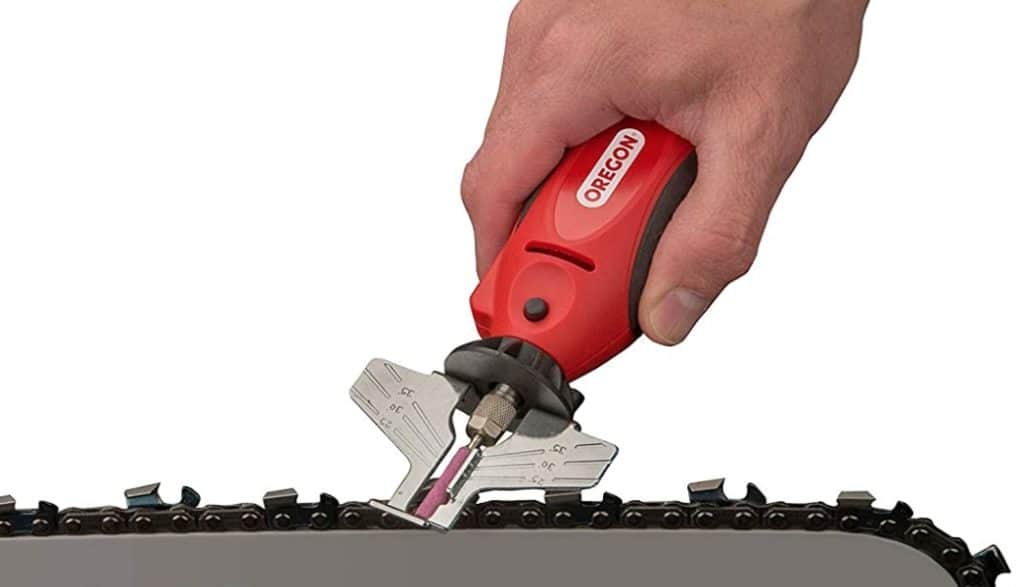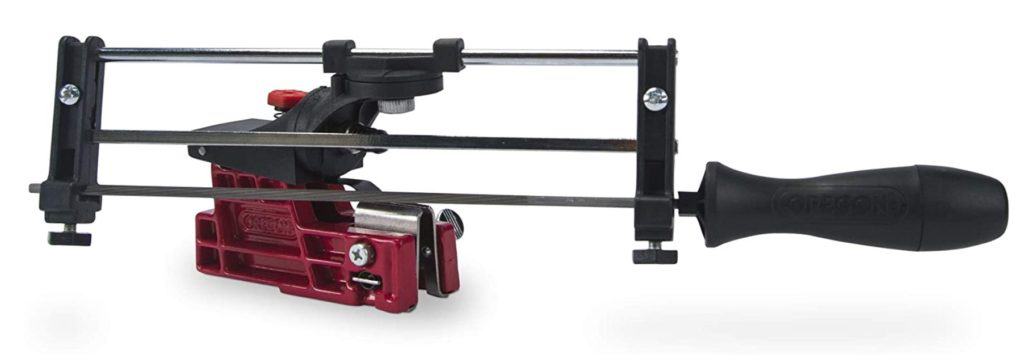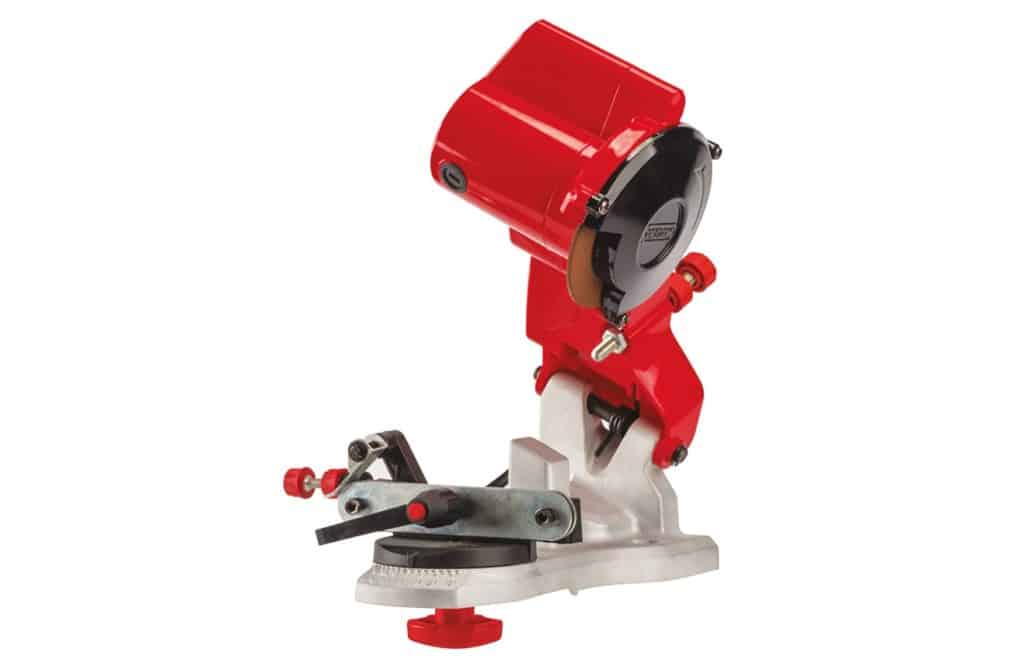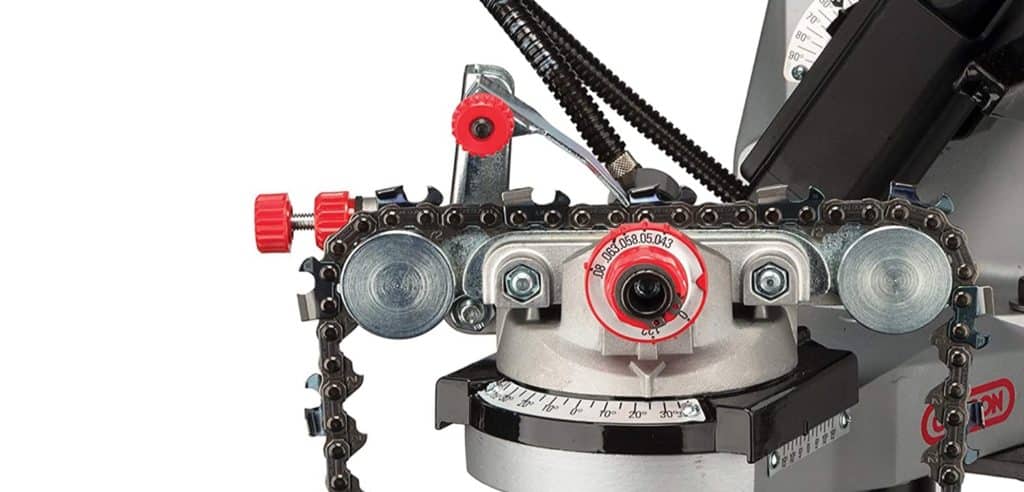If you have a chainsaw, you are going to want to sharpen it occasionally. This is cheaper and more effective than buying a new chain.
The thing with chainsaws is that they have a lot of teeth. These teeth wear out as you use the saw, making cutting through wood slower, more strenuous, and more dangerous. You want a good, sharp teeth as you make your cuts. A sharp chain cuts quicker and it lasts longer, saving money in the longer run and putting less stress on your chainsaw.
Chainsaw sharpeners can be electric or manual. The electric ones are power tools, and site on your workbench similar to a miter saw or router. Electric chainsaw sharpeners cost about $150-$350 depending on how heavy duty they are and they are for people who do a lot of sawing. There are also portable or handled electric models, which is a middle ground between an electric benchtop model and a manual tool.

Manual chainsaw sharpeners are really just specialty files. If you have the right file you can even use a standard metal file, but things will be much better and easier if you get a specialty file designed to do the job as it will take much of the technique out of the equation. It’s a slow process as you’ll need to flip the saw over, stabilize it, and then sharpen each of the cutting teeth one by one, but it’s cheap and very effective.
Keep in mind that chainsaw blades have two primary components: the raker and the tooth. The raker is the vertical member that is inline with the blade while the tooth is the cutting piece that is sideways. When you are sharpening a chainsaw you are sharpening the teeth. This sharpening will inherently shorten the teeth, which means that you will eventually have to file down the raker as well, so that they are all flat across the top. If the raker is taller than the teeth the saw won’t cut well.

If you want to sharpen a chainsaw the right way, the best place to start with with some Oregon hand files. For about $20 you can get a kit from Oregon with the files you need for any chain as well as a depth gauge (to know the blade is flat). It’s a manual set of tools which means work will be slow, but it’s the right tool for the job, especially if you want to learn more about chainsaws and learn how to become better at operating one.
These kits are normally sold with a stump vise, which is used for sharpening the chainsaw in the field, but this isn’t necessary if you have a metal vise setup in your workshop.

If you want the convenient of an electric tool but don’t need a full-size model, then there is the Oregon 12V Sure Sharp electric sharpener. This is powered by a car battery or car outlet, so it’s really meant to be used when on-the-go, but it’ll work anywhere. This one looks a lot like a Dremel, but it has wings on the side of the file which will ensure you are working at the correct angle.
Keep in mind that the electric models are faster than manual, but not necessarily better. In fact the electric models require more skill than manual ones because chainsaw chains need a very light touch when sharpening and there is a tendency to take off too much cutting material when using an electric tool, making them harder to use well than a simple file.

This is why that, for the same price as the 12V electric Sure Sharp, you will likely do a better sharpening job with the Sure Sharp Manual guide setup. This ensure pinpoint accuracy when sharpening your chain but housing the hand file in a guiding jig.

And then, if you want a benchtop electric model, one can be had from Oregon for under a $100. The Oregon 310-120 Compact Mini Bench Grinder will be overkill for most people, especially if you are under, say, 5 acres of land, but it’s and affordable tool from a quality brand. This is a light duty model that likely won’t outlast a few file sets, but it’ll get the job done once you get the hang out of the filing system.

